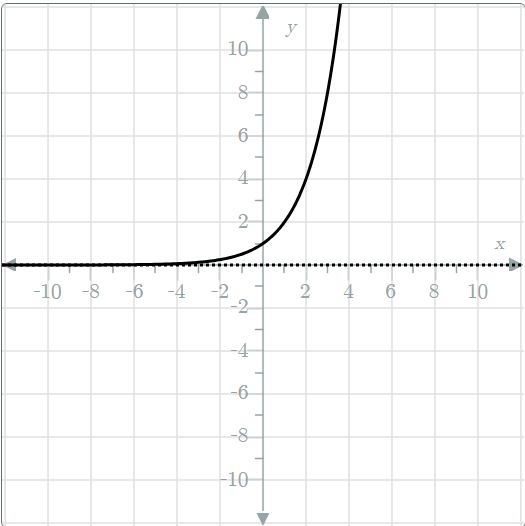QCE Mathematical Methods Unit 2 Practice questions
1/6
There's no tags or description
Looks like no tags are added yet.
Name | Mastery | Learn | Test | Matching | Spaced |
|---|
No study sessions yet.
7 Terms
Determine the y-intercept of y = 3x
y-intercept = 1 [This is because x=0, and the index law states that any number to the power of zero equal 1]
Hence or otherwise determine the y - intercept of y = 3x−3
y-intercept = -2
Determine the horizontal asymptote of y = 3x
y = 0 [This is because when x approaches infinity, the value of y approaches 0, indicating the horizontal asymptote.]
Hence or otherwise determine the horizontal asymptote of y = 3x - 3
y = -3 [3x = 0 and 0 - 3 = -3]

This is a graph of y = 2x , How do we shift the graph of y = 2x to get the graph of y = 2x− 5?
Move the graph downwards by 5 units
Consider the curve y = 4x − 5. Determine the y-intercept of the exponential curve.
y-intercept = -4 [4x = 1. 1 - 5 = -4]
Consider a graph of y = 3x. How could the graph of y = 3x+1 be obtained from the graph of y=3x?
Through a vertical translation